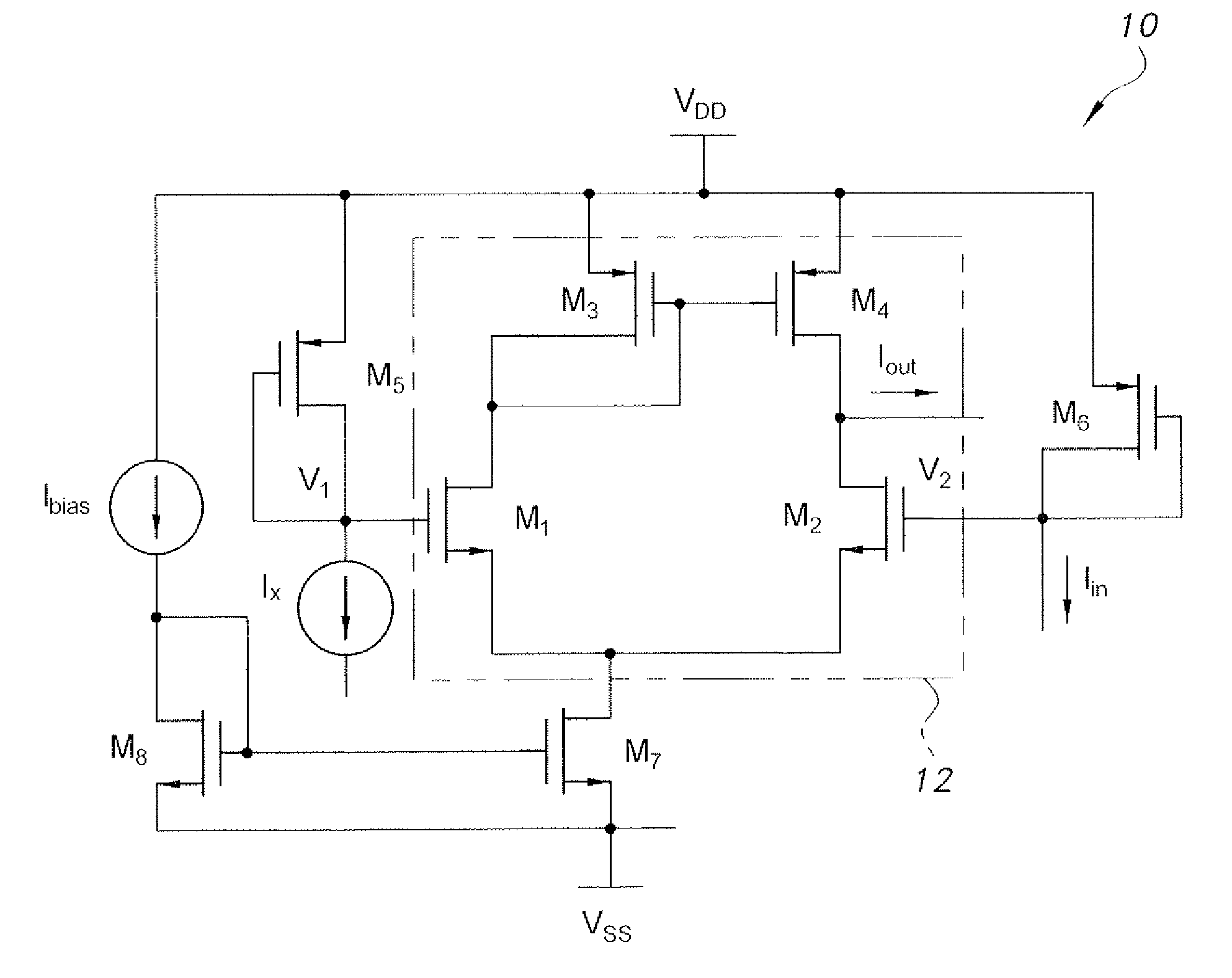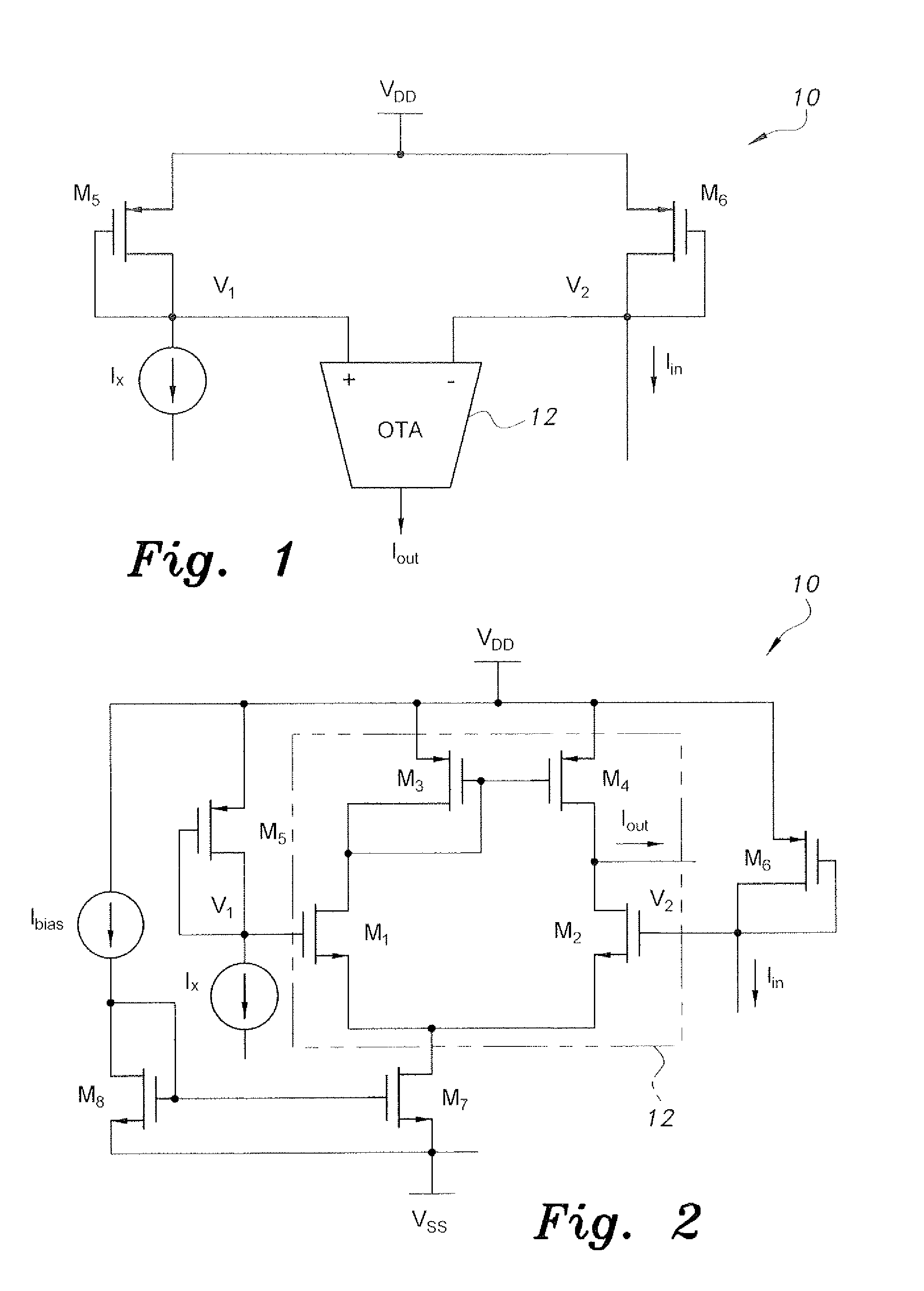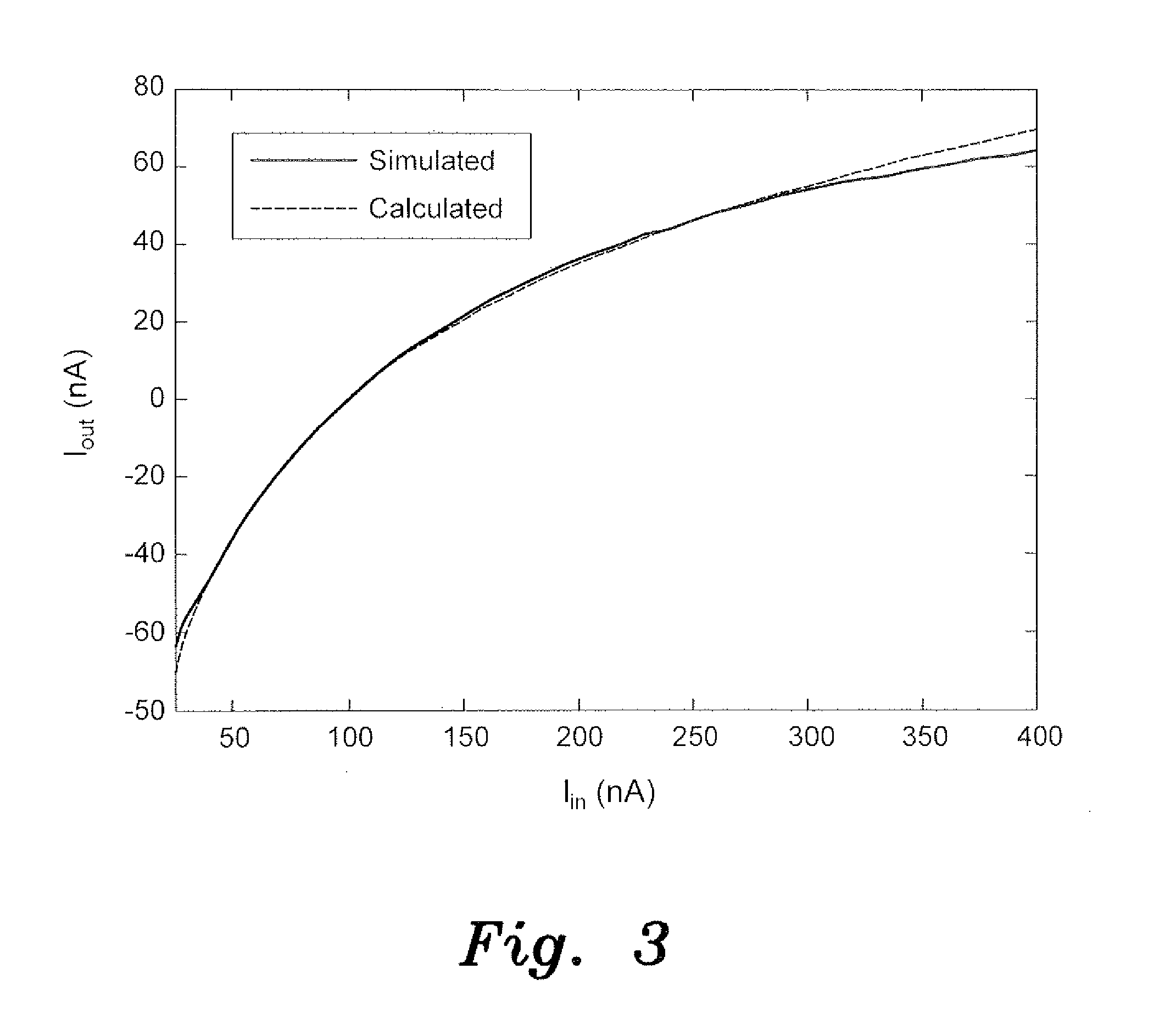Current-mode CMOS logarithmic function circuit
- Summary
- Abstract
- Description
- Claims
- Application Information
AI Technical Summary
Benefits of technology
Problems solved by technology
Method used
Image
Examples
Embodiment Construction
[0012]The current-mode CMOS logarithmic function circuit provides an ultra-low power circuit that produces an output current proportional to the logarithm of the input current. An OTA (operational transconductance amplifier) in combination with two PMOS transistors provides a high dynamic range, controllable amplitude, high accuracy and insensitivity to temperature variation.
[0013]Although theoretically or ideally there should be no current between the drain and source of a MOSFET when the transistor is turned off (the gate-to-source voltage is less than the threshold voltage of the device), in practice there is a weak inversion current that varies exponentially with the gate-to-source bias voltage. This is referred to herein as operation in the weak inversion mode. The current-mode CMOS logarithmic function circuit makes use of this phenomenon to produce an output current proportional to the logarithm (natural logarithm) of the input current.
[0014]The PMOS transistors M5 and M6 are...
PUM
 Login to View More
Login to View More Abstract
Description
Claims
Application Information
 Login to View More
Login to View More - R&D
- Intellectual Property
- Life Sciences
- Materials
- Tech Scout
- Unparalleled Data Quality
- Higher Quality Content
- 60% Fewer Hallucinations
Browse by: Latest US Patents, China's latest patents, Technical Efficacy Thesaurus, Application Domain, Technology Topic, Popular Technical Reports.
© 2025 PatSnap. All rights reserved.Legal|Privacy policy|Modern Slavery Act Transparency Statement|Sitemap|About US| Contact US: help@patsnap.com



